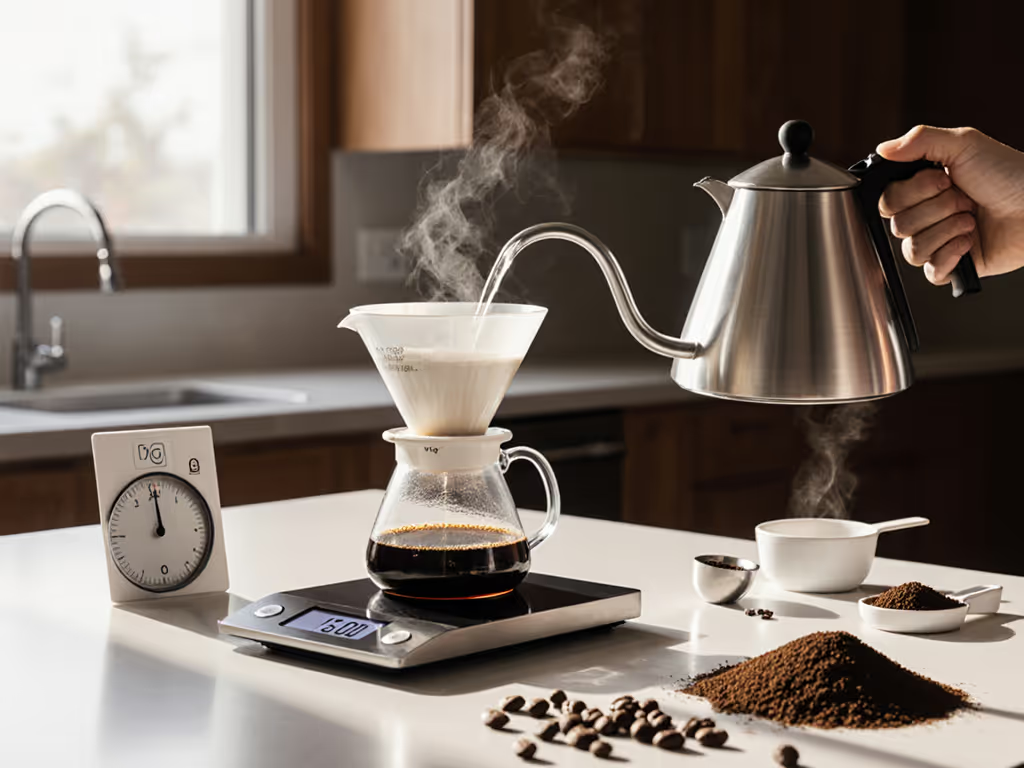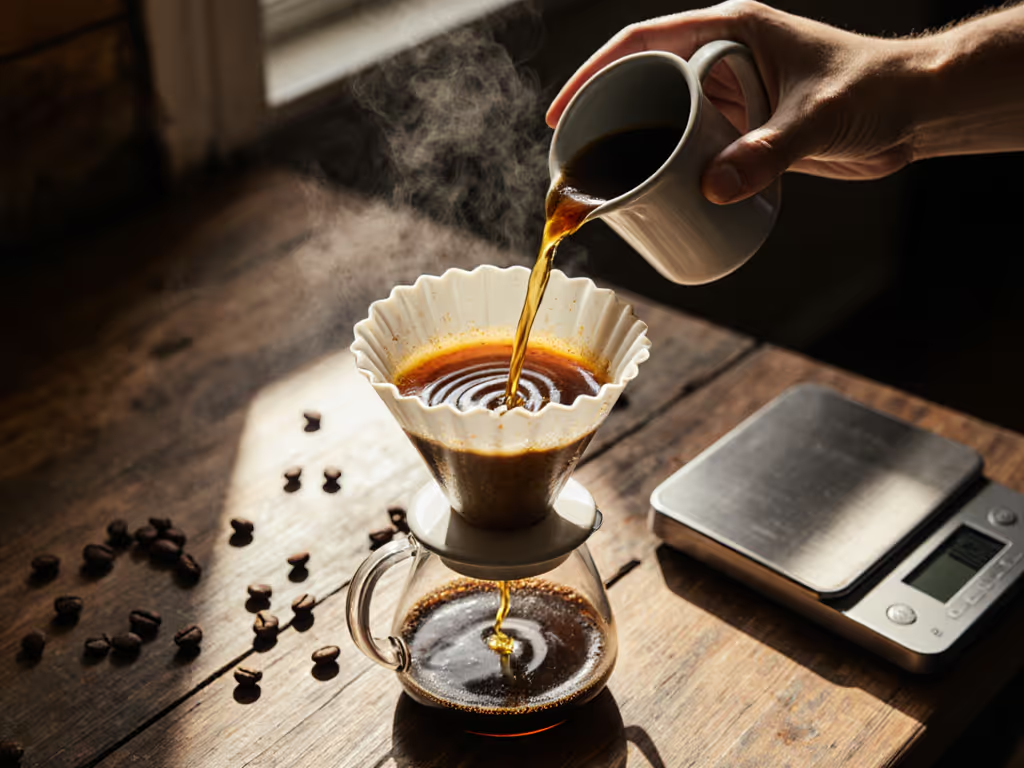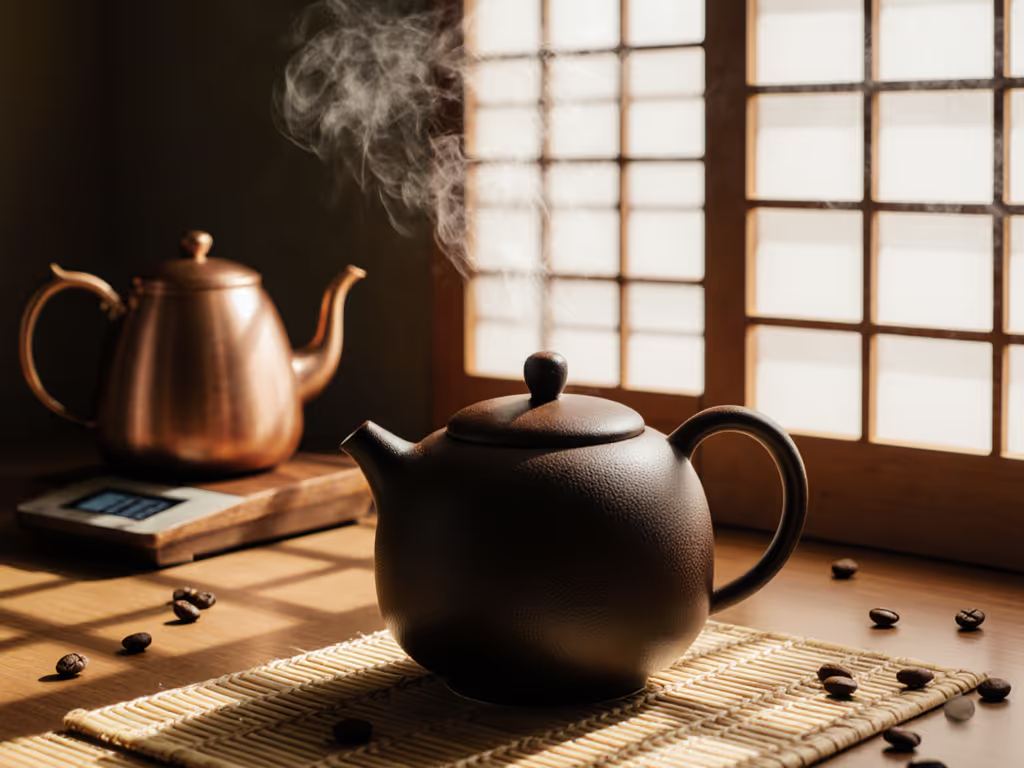
History of Pour Over Coffee: Melitta's 1908 Paper Filter
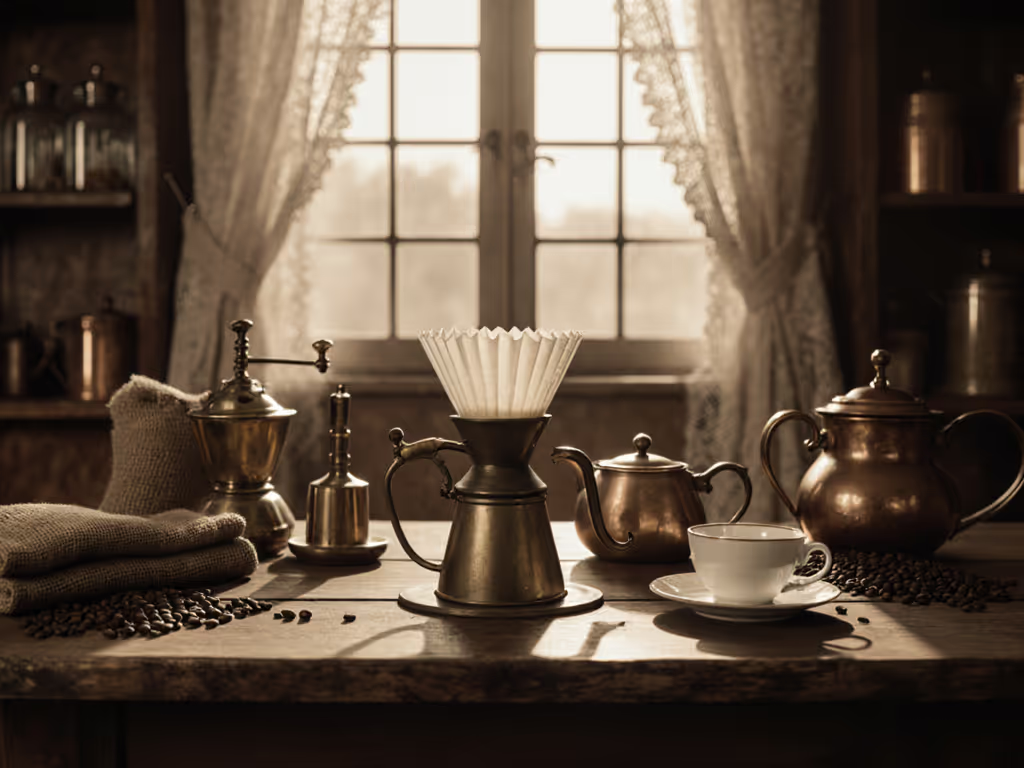
The history of pour over coffee begins with a simple rebellion against bitter sludge. Before 1908, coffee brewing was a gamble between over-extracted percolators and finicky cloth filters. Then Melitta Bentz's invention changed everything, a perforated brass cup lined with her son's blotting paper. Her patent on July 8, 1908, cemented the origin of pour over coffee as we know it. But this revolution came with hidden costs that modern brewers are still unpacking.
The Mess Before Melitta
Pre-1908 coffee was a daily compromise. Percolators cycled boiling water through grounds repeatedly, extracting harsh oils and fines. Cloth filters offered cleaner cups but demanded meticulous rinsing to avoid rancid residue. Water sat stagnant in pots, cooling while grounds settled. Result? Lukewarm, muddy coffee with an unpleasant aftertaste. Home brewers sacrificed time for mediocre results (no wonder coffee was often a chore, not a ritual).
Why Cloth Filters Failed for Daily Use
Cloth filters required:
- Scalding water rinses after every brew
- Soap-free drying to avoid chemical taint
- Replacement every 3-6 months (cost: 5-10% of your weekly coffee spend)
- Vigilance against mildew in humid kitchens
I saw this firsthand during apartment moves (cloth filters left stains on shelves and doubt in my cup). Convenience wasn't lazy; it was survival.
Melitta's Fix: Simple But Costly
Melitta Bentz's 1908 breakthrough was brutally pragmatic. Using a hammer, nail, and school notebook paper, she created a single-use filter that solved two problems at once: eliminating grounds and simplifying cleanup. Her patent, "Coffee filter with a domed underside, recessed bottom and inclined flow holes", was a masterclass in targeted problem-solving. Sales exploded at the 1909 Leipzig Trade Fair (1,200 units moved), proving demand for reliability.
But this convenience manufactured a new problem: waste. One filter per cup adds up fast. At 20 cups/week, that's 1,040 filters yearly (stacked, they'd reach my kitchen counter). And paper filters aren't just trees; they're microplastic-lined in many brands, defeating compost promises. Value shows up in the cup, but what about what lands in the landfill?

The Evolution of Coffee Brewing: From War to Waste
World War I nearly killed Melitta's fledgling business. Coffee imports halted, paper rationed, and Hugo Bentz (her husband) drafted. Yet the filter survived because it delivered tangible value: cleaner coffee with less labor. Post-war, cone-shaped filters (1932) refined extraction, but the single-use model stuck. By the 1950s, paper filters became gospel (even as plastics enabled reusable synthetics).
Here's the critical gap: Melitta's original design used reusable brass. The disposability was a later compromise. We accepted it because it aligned with mid-century convenience culture. But when you're testing water hardness before brewing, you know: every variable matters. Why ignore the filter's impact on flavor and waste? For a side-by-side breakdown of flavor, clarity, and waste, see our paper vs metal filters comparison.
Third Wave Coffee Movement: Rediscovering What Was Lost
The third wave coffee movement (circa 2000s) finally asked hard questions. Specialty coffee demanded purity, but paper filters trapped oils that carry nuanced flavors. Brands like Chemex leaned into this, promoting paper's "clean" profile as premium. Yet baristas quietly reused filters at competitions. The movement exposed a contradiction: chasing nuanced flavors while ignoring filter waste.
This isn't hypocrisy, it's missed optimization. Metal filters let more oils through, amplifying body and sweetness. My pour over coffee set switch to stainless mesh cut my filter costs by 100% overnight. And dialing my grind finer? Suddenly my medium-roast Kenyan tasted fruitier, not harsher. Efficiency is a flavor you can taste.
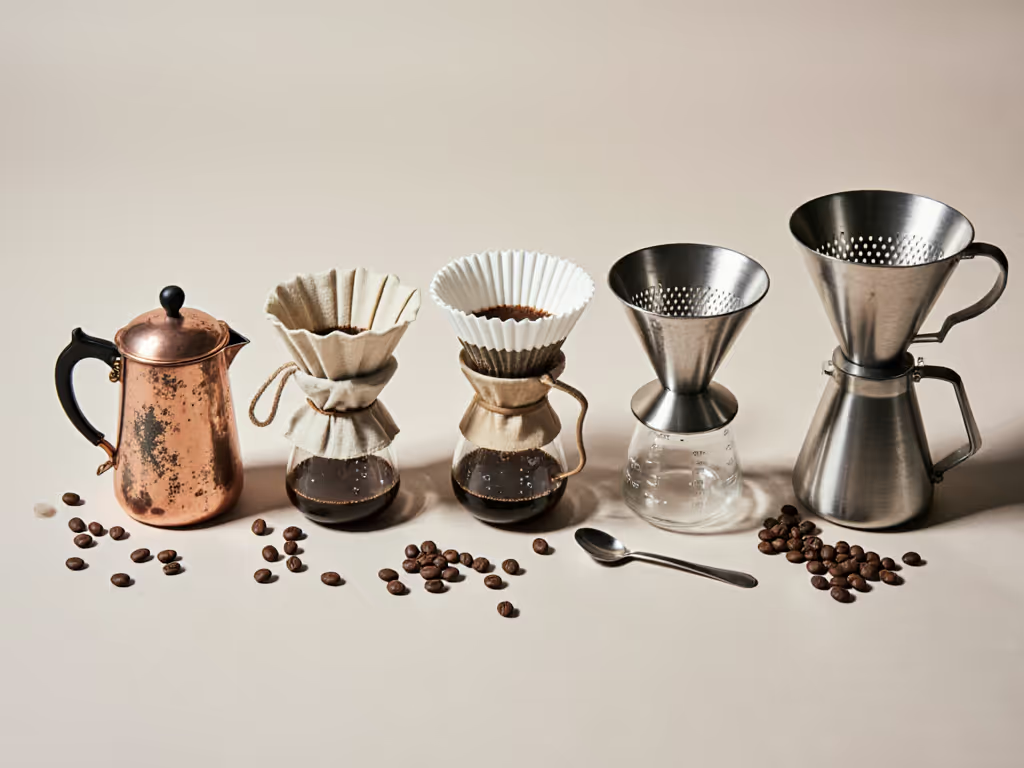
What the History Hides: Your Weekly Waste Audit
Let's do the math you won't see in glossy coffee ads:
- Paper filters: $0.03-$0.06 per cup × 20 cups/week = $31-$62 yearly
- Waste volume: 1.5 lbs of paper/year (not counting packaging)
- Flavor cost: Oils removed = 12-15% flavor compounds lost (per 2022 SCA study)
Compare that to a $20 stainless mesh filter:
- Breakeven: 333 cups (under 4 months at 20 cups/week)
- Waste: Zero paper, reusable for 5+ years
- Flavor gain: Fuller body, preserved volatile aromatics
Moving apartments twice, I tracked this religiously. Lower waste meant lower spend (and sweeter coffee). That's not nostalgia; it's arithmetic.
Actionable Step: Reclaim Your Ritual
Stop accepting disposables as "the way." This week:
- Audit your filter spend: Multiply cups/week by your filter cost
- Test a reusable filter: Start with a $5 stainless steel mesh (e.g., Able Disk)
- Adjust for oils: Grind 10% finer and reduce bloom time by 15 seconds
Brew great, spend less, waste nothing; your sink will thank you.
The history of pour over coffee isn't just about Melitta's ingenuity, it's about recognizing when convenience becomes complacency. Her invention solved immediate pain. Now, we're tackling the secondary costs she couldn't foresee. Great coffee respects your budget and the planet. Value shows up in the cup, and in what you don't throw away.
Related Articles

